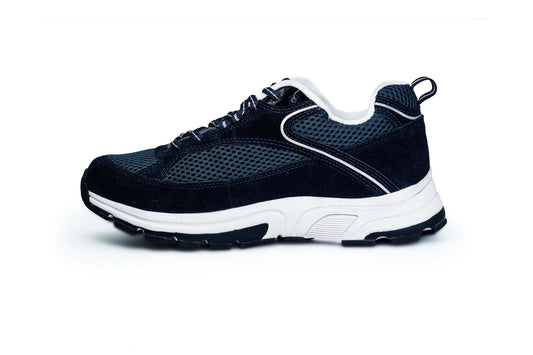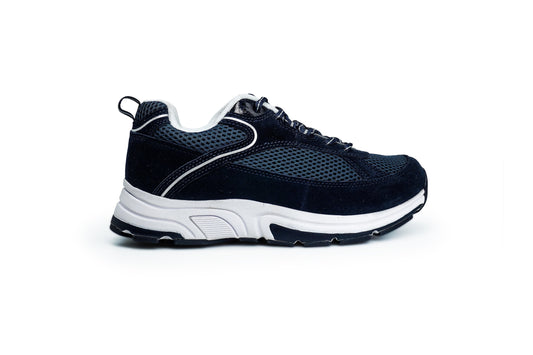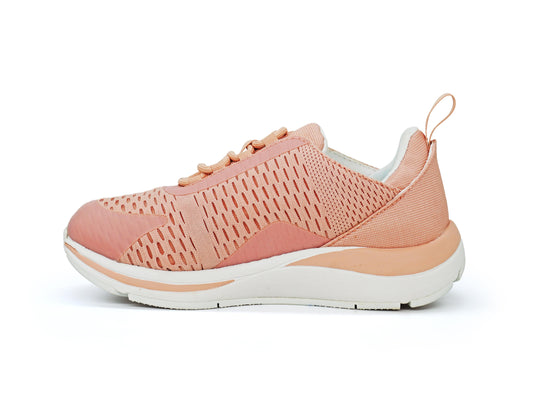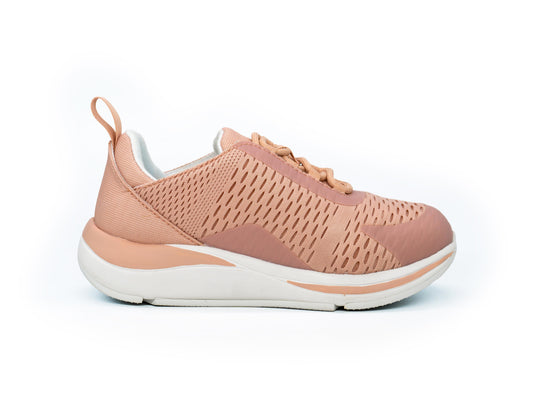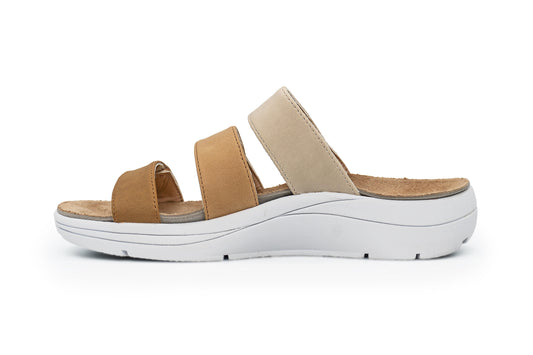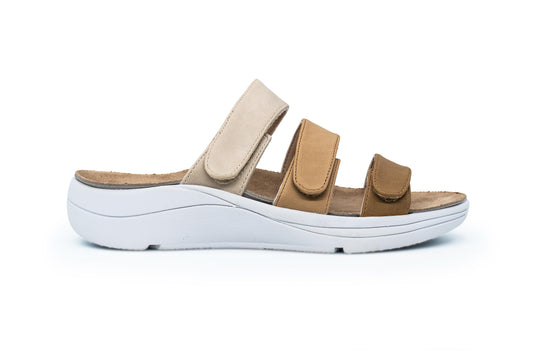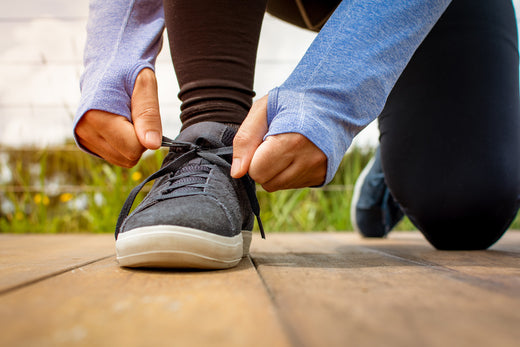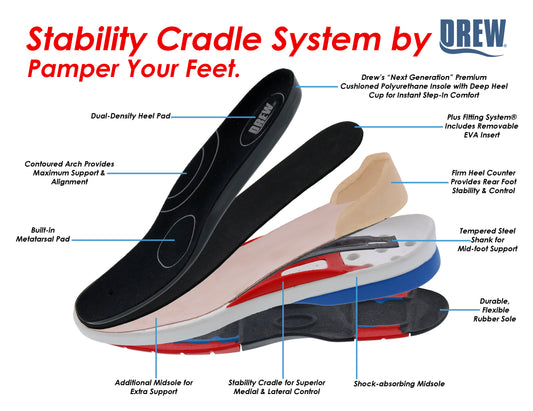WHY DO REGULAR SHOES NOT WORK FOR DIABETIC FEET?
Proper care for the foot is important for diabetic people. Diabetes causes foot problems such as neuropathy, poor circulation, and infections. All these facts necessitate people suffering from diabetes to show particular care about their footwear. Unfortunately, regular shoes are not well suited to the needs of diabetic feet. It leads to pain and discomfort, along with sometimes serious complications. This article will explore why regular shoes cannot be used with diabetic feet and why people with diabetes must use special diabetic shoes.
DIABETIC NEUROPATHY AND LOSS OF SENSATION:
One of the most common complications of diabetes is diabetic neuropathy. This condition damages the nerves, mostly in the feet and legs. Neuropathy may cause a loss of sensation, meaning that people suffering from diabetes may not feel pain, pressure, or injuries to their feet. In a regular shoe, the lack of cushioning and support causes blisters, calluses, or even cuts. However, without the sensation of pain, a person with neuropathy may not feel the injury until it has already become serious.
Regular shoes do not have soft, cushioned interiors to protect sensitive feet. When there is no proper cushioning, the constant pressure and friction from the shoe may lead to the formation of blisters or sores that may go unnoticed until they become infected. In severe cases, these injuries can result in ulcers, a serious complication for individuals with diabetes that may require medical attention or, in extreme cases, amputation.
POOR CIRCULATION:
Diabetes also leads to poor circulation, affecting the blood supply to the feet. Decreased circulation results in swelling and discomfort and can even make the feet cold. Poor circulation slows the healing of injuries. Normal shoes are often too tight or fit poorly, thereby restricting blood flow and exacerbating poor circulation.
For diabetic patients, it is essential to use shoes with enough space to accommodate the feet so that the toes and heels are not subjected to undue pressure. Regular shoes, especially tight, pointed-toe boxes and high heels can exacerbate circulatory problems and contribute to worsening complications. Inflexible shoes or those that are too tight can create pressure points that interfere with blood flow and deny the feet the necessary nutrients and oxygen for proper healing.
LACK OF PROPER CUSHIONING AND COMFORT:
Ordinary shoes are created with fashion and comfort for general people, not particularly for those with diabetes. Diabetic feet need a specific kind of cushioning and support to take impact and distribute pressure without injury. Diabetic shoes often feature added depth and cushioning that helps cushion the foot from harmful pressure points.
On the other hand, regular shoes do not contain shock-absorbing insoles and arch support which a diabetic needs. So without the right cushioning, each step will have its impact and pressure on the feet, creating a source of stress for them. Such pressure will then create calluses, corns, and blisters, which can progress into open wounds, an ideal place for infections to breed. Other normal shoes fail to offer stability to keep the foot well aligned, a misalignment that imposes extra strain on the foot and joints in turn accelerating an already existing problem in the foot.
IMPROPER FIT:
Probably the most common reason why regular shoes fail to work for diabetic feet is the improper fit. Either too tight or too loose, it can cause a variety of problems. The too-tight shoes may pinch, rub, and cause pressure that leads to sores, blisters, and even deformities such as bunions and hammertoes. Loose shoes may cause the foot to slide around inside the shoe, which will create friction and lead to blisters or sores.
For diabetic patients, fit is the most critical thing. Diabetic shoes are designed to have a wider fit, especially in the toe box, to give space for the toes to spread and avoid unnecessary pressure. In contrast, regular shoes often come with a narrow or standard fit, which can hardly accommodate foot deformities like bunions or hammertoes. A proper fit helps reduce friction and pressure, thereby preventing injuries and making one feel comfortable.
LACK OF SEAMLESS CONSTRUCTION:
Inside seams in normal shoes can cause friction and irritation to the skin, especially for diabetic neuropathy patients who may not feel the discomfort. Seams can rub against the skin, causing abrasions or blisters, that go unnoticed and become infected. This is particularly a problem for people with poor circulation because wounds may heal slowly and become more susceptible to infection.
Diabetic shoes are also constructed to be seamless. This feature helps avoid irritation caused by seams or stitching. For a person who has nerve damage, it is not possible to feel the discomfort of friction or pressure. Seamless shoes can prevent the formation of sores and blisters and therefore the chances of infection are minimized, and better foot health is maintained.
RISK OF INFECTION:
Individuals with diabetes are more susceptible to infections because their blood circulation is reduced, and their immune systems are compromised. Any minor injuries, such as cuts, blisters, or abrasions, may easily develop infections if they are not well cared for. Infections caused by regular shoes, especially those that are made from non-breathable materials, may occur since the shoes trap moisture and heat around the foot, thereby creating an environment that promotes the growth of bacteria and fungi.
Diabetic shoes are made with breathable materials to make sure the feet remain cool and dry. In addition, moisture-wicking socks can be worn underneath for better prevention of sweat buildup and moisture accumulation. These features are what ensure proper airflow and moisture control to prevent infection. Diabetic shoes offer a safe environment for feet.
Discover the perfect balance of support, style, and expert guidance for your feet. Explore our collection of orthopedic and diabetic shoes designed to keep you moving with ease.
Start your journey to happy, healthy feet today!
Visit us at DiabeticShoe for more tips, insights, and footwear solutions.
Stay Connected:
Follow us on Facebook, Instagram, YouTube, LinkedIn, Twitter, Pinterest, and Quora for updates, advice, and more informative content.

